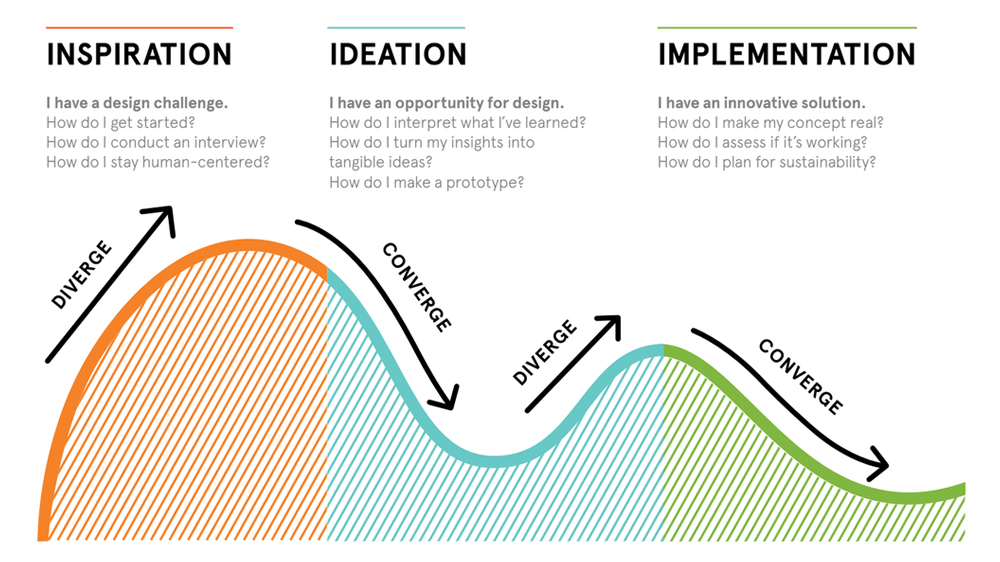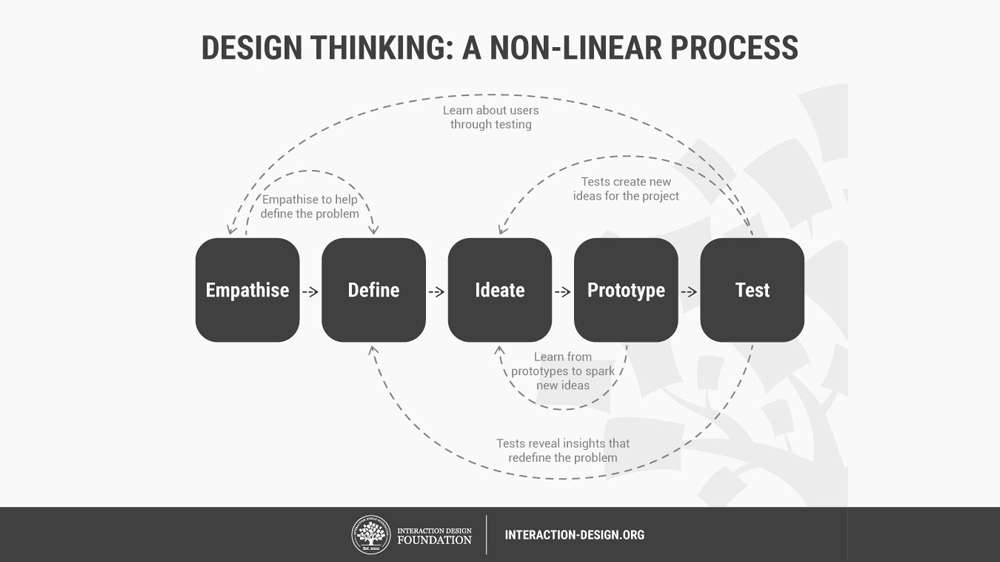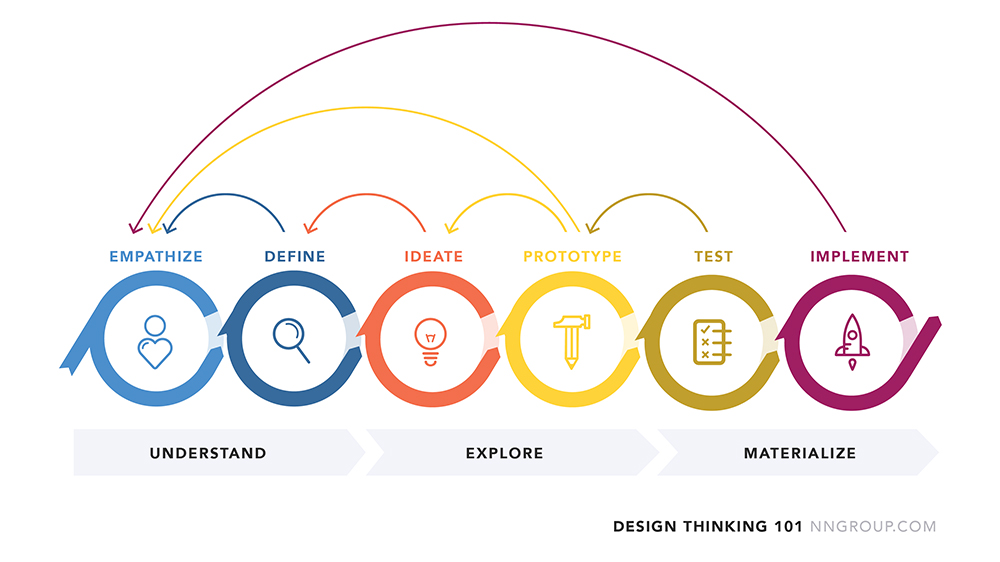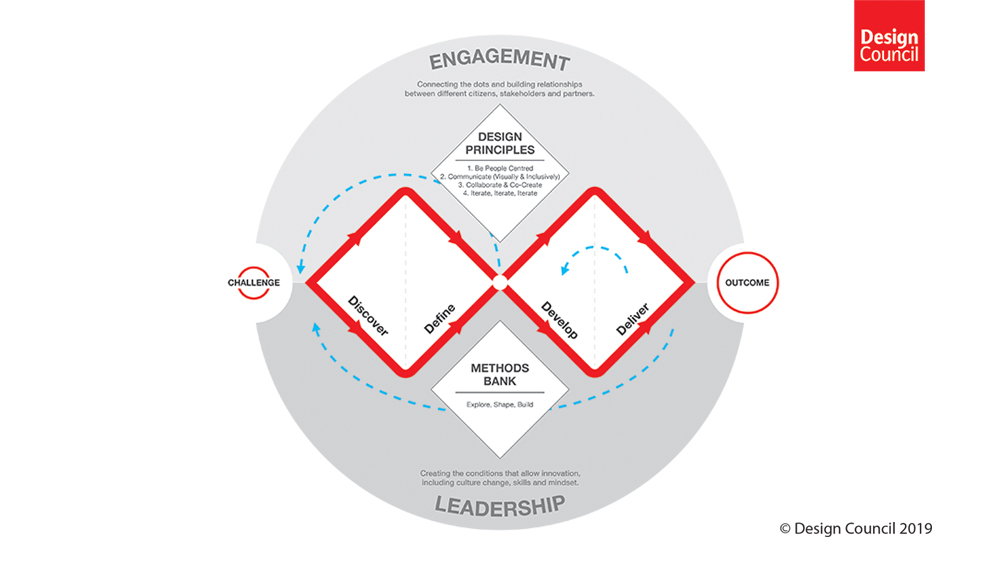DEEP HUMAN INSIGHT & CREATIVITY
What is
Design Thinking
“A way of finding human needs and creating new solutions using the tools and mindsets of design practitioners.”
– David and Tom Kelley
This quote from David and Tom Kelley very broadly defines the concept of design thinking. Their simple definition highlights the high aspiration behind the concept: design and its methods can be used to solve challenges that human beings face.
The field has seen incredible popularity in recent times, with many different interpretations of the design thinking process emerging from notable names in the field.
But no matter the interpretation, two concepts are apparent: (1) design thinking focuses on finding human needs before moving into creating the solutions, (2) there are points for diverging thought and points for converging them.
1. Finding Human Needs, Before Creating New Solutions
A powerful quality of design thinking is its bringing users back into the center of decisions made by the people trying to solve problems for these users. Design thinking emphasizes a need to empathize with users, deeply understand their problems, before moving onto finding a solution. The analysis and understanding of a problem is separated from the search for the solution. This way, effort is not expended on solutions that might not even solve the real problem in the first place.
2. Diverge and Converge
In design thinking, there is the idea of diverging and converging thought. The first time design thinkers diverge is in going out to observe a need, problem or challenge, from a variety of perspectives to truly understand the issue at hand. They then converge by analysing their findings and agreeing on a definition of what the problem really is. They then diverge again when thinking of a solution, exploring as many concepts as they can, quickly testing ideas and iterating on them when needed. Once a preferred solution is arrived at, they then converge on the creation of that solution through an iterative process.
Key Highlights:
- DT is about creative problem solving.
- DT is meant to help you learn directly from people, open yourself up to a breadth of creative possibilities, and then zero in on what’s most desirable, feasible, and viable for the people you’re designing for.
- DT is for everyone, not just designers.
- DT is not a linear process, more or less time could be spent in different phases, and some phases are even revisited again.
OUTCOMES TO ACHIEVE YOUR GOALS
Benefits of Design Thinking
(1) Bringing people back into focus
“User-centered design means understanding what your users need, how they think, and how they behave – and incorporating that understanding into every aspect of your process.”
– Jesse James Garrett
The primary benefit of design thinking is that the human being is always kept at the core. In the past, it was commonplace for businesses to make decisions based only on business metrics like sales targets or technical constraints.
Design thinking, however, calls on organisations to instead take care to understand the situation and the context of the people they wish to serve – their challenges and opportunities, their wishes and needs – before making any decisions. Through thorough ethnographic research, design thinkers try to get a good understanding of the system in which they are operating.
This focus on humans helps all types of organisations make better decisions. It helps businesses create products that are truly valuable to customers, social services to offer initiatives that have truly meaningful impact, or government agencies to address wicked problems that seemed impossible to solve.
(2) Iteration and prototyping as a way to move forward
Another benefit of design thinking is in its attitude of experimentation, which fosters a spirit of innovation yet keeps projects moving forward and agile.
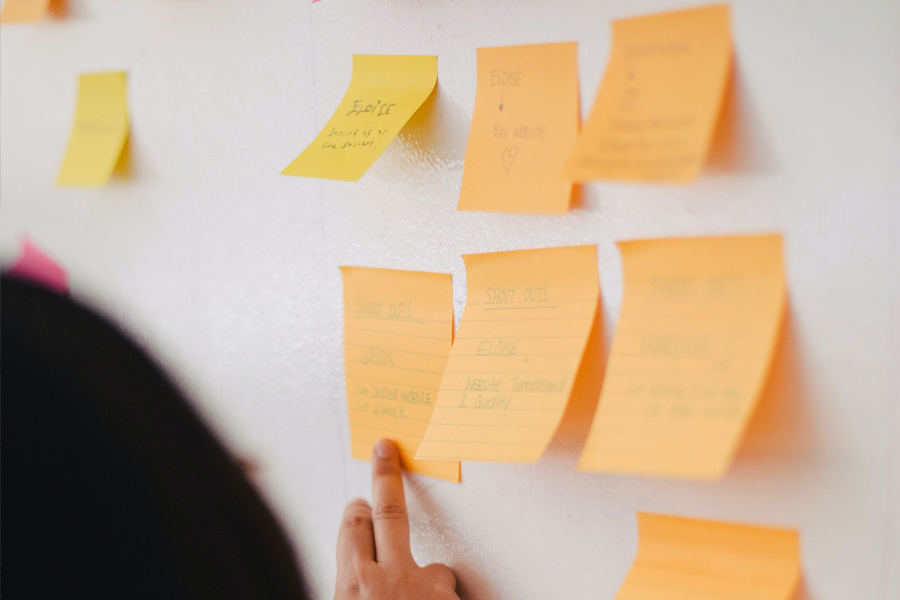

Human-centered designers tinker, test, and fail early and often. Despite not knowing the answer to the challenge at hand, design thinkers have the courage to forge ahead in experiments. They are driven by the belief that a solution is out there, and by keeping focused on the people they are designing for and asking the right questions, they will eventually arrive at a solution together.
This is done primarily through the conceptualising of numerous ideas, and making these ideas tangible so that they can be tested and refined. This approach amounts to wild creativity, to a ceaseless push to innovate, and a confidence that leads us to solutions that may have never been dreamed of at the start of the project.
(3) Effective creative communication
Design thinking creates a set of collaborative tools that helps people work together across differences. It asks team members to make an initial investment in really understanding a problem from diverse perspectives, thereby building a common mental map across team members based on the criteria required for a good solution.
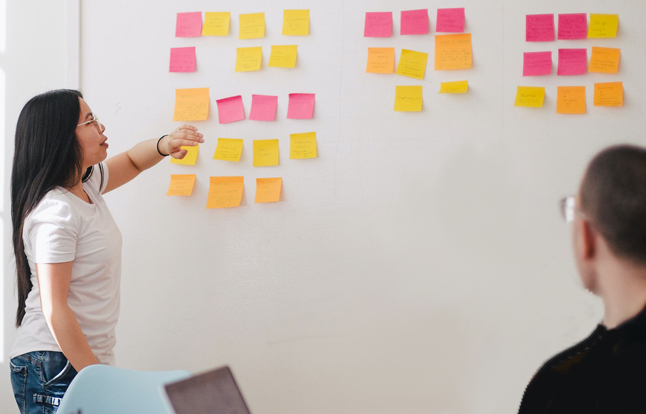
With this shared mental model, team members can engage in effective creative conversations, instead of endless debate in which each person comes from their own perspective of the world with unarticulated assumptions about what’s really important.
(4) From Cooperation to Co-creation
At its core, design thinking is a collaborative and ideally multidisciplinary approach. While traditional projects in the corporate world are usually based on cooperation, design thinking is based on collaboration.
Cooperation in this sense means that people work together as a team but are not necessarily all involved in all steps of the process. A design thinking team on the other hand ideally works together and creates together at all stages of the project. Co-creation, especially amongst a team that is multidisciplinary, unlocks vast amounts of creativity.
For example, an engineer could work with a social worker, a designer, a philosopher and a business expert to solve whatever challenge they are working on. This is a team consisting of “T-shaped persons”, where member has depth of knowledge in a given expertise, while also has the ability and willingness to reach out to others and to bridge the gap between the disciplines.

